Whether you live a vegan lifestyle or not, today there are more vegan-friendly alternatives to real leather on the market than ever before.
From fruits to vegetables to rocks, manufacturers are getting creative with materials, and there are tons of options available, with more in production.
But whilst you might never consider wearing a garment or carrying a bag made from animal skin, choosing an alternative leather is more complicated than you might think. So what's the difference when comparing faux leather vs vegan leather? They are similar but don't necessarily refer to the same thing.
Each material has a different impact on the planet and there's no perfect solution (yet). There's also the challenge of balancing cost, quality and manufacturing practices.
At Leafy Souls we keep it simple - no leather products, ever. All the products listed on our site are 100% cruelty-free.
It's our mission to make it easy to enjoy a vegan lifestyle. So below is a comprehensive guide that will explain what vegan leather is, what faux leather is and help you decide if these choices are better than traditional leather.
We will also explain how traditional leather is made, the effects on the environment of both animal and vegan leathers, and the various alternatives available.
So grab a cup of fair-trade coffee, and let's get started!
What is the Difference Between Faux Leather and Vegan Leather?
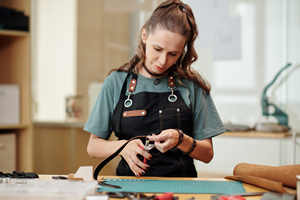
While they are both essentially the same, not all faux leathers are vegan, but all vegan leathers are faux leather.
Pretty much all faux leather is made from plastic. That includes many vegan leathers too, but not all vegan leathers are plastic.
We are in a moral conundrum here. On the one hand, we want to consume as few animal products as possible (Our Vegan Heart)
On the other hand, plastic is terrible for the planet (Our Vegan Lifestyle).
Why Not Traditional Leather?
Vegans just don't do leather from animals. Aside from the issue of killing an animal to make a handbag, real leather is not an environmentally friendly product, and we shouldn't include it in our fashion.
But it's not just animals that are harmed by leather - the processes used to make genuine leather products put the health of traditional leather-workers at risk. And the lax regulations in factories often deposit toxic waste into our water and food supply in the form of wastewater and airborne solvents.
All so that we can wear products made from animal hides? Doesn't sound very ethical, but some leathers to advertise themselves as ethical leather, based on how the animals were farmed and the tanning process involved.
You need to be able to spot the difference between these and a real cruelty-free vegan leather, so let's dive a little deeper into the problems around traditional leather and the two main tanning processes.
Chrome Tanned Leathers
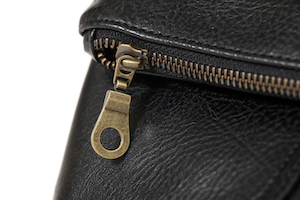
Animal hides need to undergo a tanning process to prevent the skin from rotting.
Chrome tanning is the quickest way to prepare leather - the tanning process completes within a day, and 80 to 90 percent of the world's leather comes from chrome tanning.
Chrome tanned leather takes on durability like plastic and does not biodegrade, nor can it be recycled.
But it’s the chemicals in the process that are really dangerous for the environment. More often than not, the process incorporates chemicals, including chromium, formaldehyde, and dyes.
Chromium, like all heavy metals, is toxic. According to the Agency for Toxic Substances and Disease Registry, formaldehyde is just as poisonous.
ALS risk, nervous system consequences, chest pain, shortness of breath, coughing, nose and throat irritation, asthma, allergies, and last but not least, cancer are the horrific side effects of this nasty colorless gas.
When chrome tanning, workers soak the hides in acid at the beginning of the process. When they remove the leathers, they leave behind wastewater that is toxic if not properly treated.
What's more, the wastewater needs disposing of, and whatever chemicals are in it will enter nearby rivers and lakes.
Vegetable Tanned Leathers
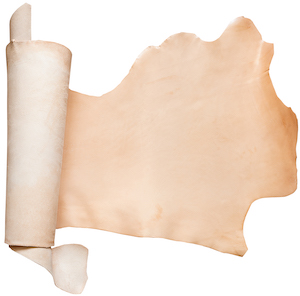
There is a chemical-free alternative to chrome tanning called vegetable tanning. Because it uses traditional methods it's often touted as a more ethical alternative - but it's still made from animal skin. Don't be fooled!
Vegetable tanning uses tannins found in trees and other plants to give animal skin its resistance to rotting, flexibility, and durability.
It's the original tanning method for leather, dating back to 6000 BC, but it was quickly eclipsed by the cheaper, faster, chrome tanning process came in the mid-19th century.
Vegetable tanning is often touted as an ethical alternative, but it still involves killing live animals for the hides in the first place.
It does make things confusing, so to keep it simple, you won’t find any animal leather products on LeafySouls.com.
What is Faux Leather?
Faux leather is essentially any fake leather product that does not use traditional methods or animal skins. Faux leather is any substrate that is made to look like genuine leather but is actually a synthetic product.
It's free from animal cruelty and like real leather, faux leather is easy to clean, water-resistant and soft and pliable. The type you've probably seen before is Pleather, leather made from plastic, which we'll take a look at below.
The first faux leather was invented at the U.S. rubber plant in Naugatuck, Connecticut in 1920, and given the name Naugahyde.
A leather-look vinyl-coated fabric, Naugahyde, was first used to make handbags.
The brand took off in the 1960s with a marketing campaign featuring a fictional faux leather monster named the Nauga, who molted once a year to bring Naugahyde to living room upholstery and handbags.
What is Pleather Made From?
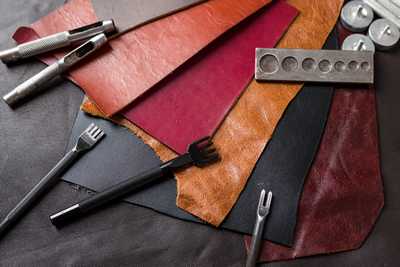
Pleather is a term for plastic leather, generally made by layering polyurethane (PU) or polyvinyl chloride (PVC) on fabric.
PU and PVC are both plastics, synthetic materials commonly used in the making of pleather. For example, this trendy elegant clutch is very popular.
Neither one is considered a completely environmentally friendly material. Still, experts believe PVC to be worse than PU in general, releasing potentially toxic dioxins when burnt.
Check the care instructions image if the piece came with one. Generally speaking, you'll want to use the "gentle" and "cold wash" categories on your washing machine.
Is PU leather vegan? Yes, although we are looking at ways to phase pleather products out of our site entirely. For now it's a good way to encourage non-vegans to shop ethically without a high-price, so we still have some PU products on our site.
What get's us really excited is the host of new plant-based vegan leathers coming onto the scene as an alternative to pleather.
Keep reading to learn about some of these exciting new products that share the use of organic materials, and that is changing the answer to the question: "What is vegan leather?"
What is Vegan Leather?
Vegan leather is any leather substitute that does not place harm on animals. To take this further, we should consider leathers made from sustainable sources too, so for the rest of this article, vegan leather will refer to sustainably-sourced, and cruelty-free leather options.
If you're trying to find out what the difference is between faux leather and vegan leather - well, they are similar, but not quite the same.
Because we want to make a vegan lifestyle accessible, sustainable, and affordable to as many people as possible, we hand-pick low-impact, high-quality vegan leather products to present to you on Leafy Souls.
But aside from faux leather, there's lots of new, exciting types made from innovative materials like fruits and even stone (more on these in a moment). It's these new innovations that people are usually referring to when they say 'vegan leather'.
There's no perfect solution yet. Whilst each one is more ecologically friendly than animal leather, they all still has an impact on the environment and can also vary greatly in cost.
Innovations Vegan Leather?
For years, vegans have battled with the idea that to wear a vegan alternative to animal leather meant harming the planet. As we described before, most faux leathers are plastic. Fortunately, there's a new wave of really exciting, innovative vegan leathers coming out. Here's some of our favorites.
Coffee Leather
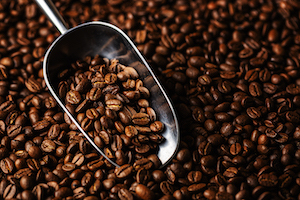
Say what? Yes. You can now wear shoes made from coffee.
A German company, nat-2, has developed a vegan leather made from recycled coffee, beans, and coffee plants.
The coffee product makes up about 50 percent of the materials in the finished shoe, which also uses recycled plastic, natural rubber, and cork.
Say what? Yes. You can now wear shoes made from coffee.
A German company, nat-2, has developed a vegan leather made from recycled coffee, beans, and coffee plants. The coffee product makes up about 50 percent of the materials in the finished shoe, which also uses recycled plastic, natural rubber, and cork.
The finished product does smell like coffee, but we think that's a good thing. The first run of this sneaker sold out, according to content on the product page, but it looks like nat-2 plans to make more coffee shoes.
Banana Leather
Yes, banana leather. Bananas do not grow on trees but the world's largest perennial herb, known as the banana plant.
Unlike fruit trees, which continue fruiting every season, the banana plant provides only one crop of bananas.
More plants can send out suckers from the underground stem, but the actual stem that produced bananas will never fruit again.
So what to do with these past-their-prime plants? Why, make banana leather, of course! Banana leather manages to be biodegradable, water-resistant, and durable all at once.
Apple Leather
Apple leather is not the kind of fruit leather you may have grown up snacking on, though the finished product does look a little like the fruit strips you'll find at the health food store.
If you can make synthetic leather from bananas, why not apples?
"We turn apples into leather." The Apple Girl's company slogan.
The company turns apple pulp waste into 100 percent biodegradable, vegan leather.
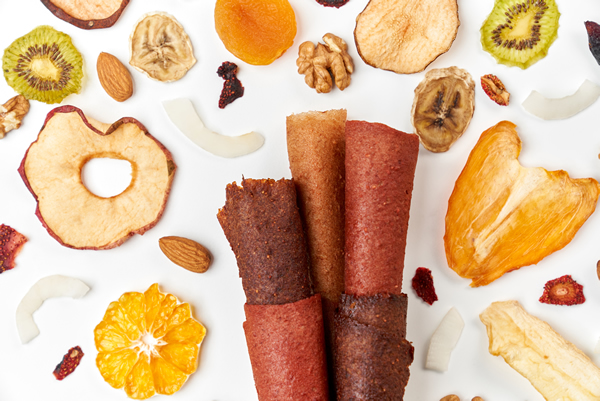
Grape Leather
Yes, there are still more varieties of vegan leather made of fruit. Also known as wine leather, Vegea, an Italian company, produces grape leather.
Vegea sources winemaking leftovers, specifically grape skins, stalks, and seeds to make its products.
The company does not allow the use of toxic chemicals or heavy metals in its production. Bentley used Vegea's vegan leather in the interior of its 2019 electric concept car.
Pineapple Leather
Another alternative to traditional leather comes from discarded pineapple tops. A company called Ananas Amam uses this byproduct to create its sustainable vegan leather, called Piñatex.
This byproduct gives the farmers an additional income stream that requires no extra resources.
Ananas Amam extracts the fibers from the leaves using an automated machine created for this purpose.
The biomass that remains once the device removes the threads converts into fertilizer or biofuel, so no waste remains.
The extracted fibers process into a sort of mesh, which is then exported to Spain to be finished into the final vegan leather.
Ananas Amam distributes Piñatex directly to designers.Piñatex is used in interior design and car interiors as well as for clothing, shoes, and accessories.
Hugo Boss makes sneakers out of this vegan leather. Check out the #madefrompinatex hashtag on Instagram to see the other products made from pineapple leaves, and if you have a Piñatex accessory, share it!
Mushroom Leather
Moving away from fruits into vegetables, we arrive at vegan leather made from mushrooms.
Amadou Leather is a brand of mushroom leather. The company grows its mushrooms on sawdust blocks.
The company claims that the leather absorbs moisture and is breathable. The end product is fully biodegradable and, the company claims, antimicrobial.
Slightly less appealing, MuSkin vegan leather comes from the Phellinus ellipsoideus, a giant alien-life-form-looking parasitic fungus that attaches to and feeds on subtropical trees.
You're not very likely to encounter this vegan leather, as the production capacity of MuSkin is quite low at the moment.
And while it is biodegradable, this suede-like faux leather is also somewhat fragile, requiring lamination to a fabric layer to increase its durability.
Red Pepper Leather
Called the "Berlin Curry" sneaker, nat-2 has used red pepper applied to an eco-flax layer to create the vegan leather used to make up to 50 percent of this shoe.
The remaining materials are cork, glass (for the company's local), and recycled plastic.
Coconut Water Leather?
OK, now I'm just pulling your leg. Am I, though? It turns out that, yes, you can make vegan leather from coconut water!
Malai Design and Materials makes a vegan leather out of bacterial cellulose from coconut water. The water they use is a byproduct that they then discard.
This vegan leather has a papery appearance, not unlike snakeskin.
Stone Leather
Two German brands put their heads together and created a sneaker made from leather derived from rock. And it's not something that Wilma or Betty would wear.
The companies Rosslyn and nat-2 (who you may remember from the coffee sneakers above) created a leather-like material out of slate stone.
"[The Stone] has been made light, soft and flexible through a very complicated and state of the art technology." nat-2 company spokesperson.
nat-2 also has a sneaker made of recycled Swarovski rhinestones. The company sources the rhinestones which do not make it to sale from Swarovski.
Cork Leather
It's not just for your wine bottle anymore. Cork is one of the more popular sustainable vegan leather options on this list.
Cork is naturally water-resistant, which makes it a great candidate for fashioning into bags and shoes.
Depending on the finish, cork products sometimes really do resemble a wine bottle stopper, and other times they look more like real leather.
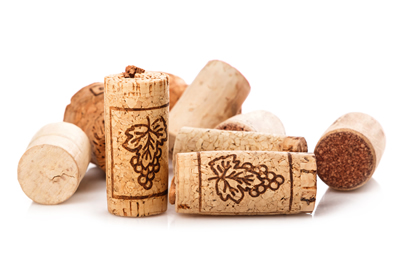
Flower Petal Leather
Nat-2 is at it again with sneakers made from rose petals. The petals, which retain their fragrance, are layered onto a flax fabric before being applied to the shoe.
The company says the roses' source varies depending upon sustainable practices and availability at the time of manufacture. Nat-2 uses ash, birch, maple, tulip tree, walnut, cherry, elm, and beech from ethically managed forests.
Nat-2 also offers a wooden sneaker made of up to 90 percent sustainable wood.
"The wood is applied to organic cotton and vector engraved in a way that the material bends and becomes soft and flexible like a fine nappa leather. The feel is very smooth and fine, while you can smell the wood and see the tree's natural texture." nat-2 company spokesperson.
Vegan Leathers of the Future
Did you think that there couldn't possibly be any more sustainable vegan leather products out there?
Entrepreneurs see potential in the market and are developing more leathers made from unusual materials. To name just a few more:
- green tea
- prickly pears
- kombucha tea
- soy
- all sorts of fruit waste
These materials are currently under development for more varieties of sustainable vegan leather.
Should You Buy Vegan Leather?
Yes! and no...
There's no simple answer to this question. Depending on how strict a vegan you are, versus your earth-sustainability moral compass, choosing a vegan leather could be a worse decision than recycling a real leather coat from a thrift shop.
It's true that vegan leather is changing the world! Is there a vegan future for leather? Absolutely! It's already here with us in the present!
Like vegan foods, which are more and more in the main-stream, so are vegan accessories and clothing.
A savvy vegan shopper cares just as much about what they wear as much as what they eat, so make sure when you buy vegan leather products, that you are choosing sustainably-sourced products.
The cruelty-free industry is expanding not only its food choices but product choices too. It's a great time to live as a vegan, on our own terms!

